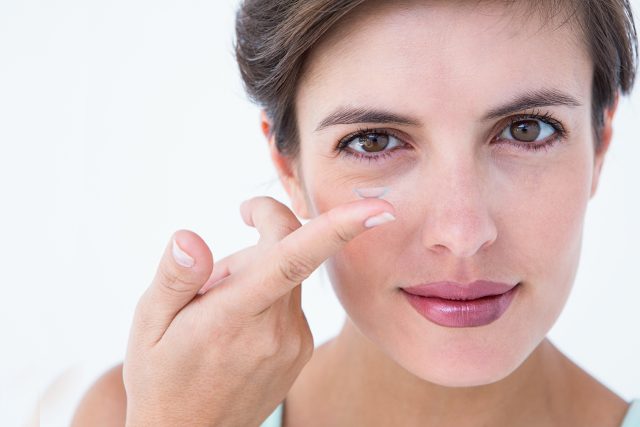Gas Permeable (GP) contact lenses have many benefits and are often better than soft lenses because…
- They provide sharper vision.
- GP lenses provide sharper vision than soft lenses which can fluctuate in shape and clarity as they start to dry out.
- GP lenses are custom-lathed (machined) to a smooth surface and maintain their shape on the eyei an.
- GP lenses provide a more stable and accurate correction of astigmatism.
- They are great for people who benefit from Bifocal or Progressive eyeglass lenses.
- GP lenses allow your eyes to “breathe” better.
- GP lenses allow more oxygen to reach the front surface of the eye than a soft lens does. This reduces the risk of eye problems caused by hypoxia (reduced oxygen supply).
- It does this because the lens material allows much more oxygen to pass through and they are smaller in diameter so they cover up less of the front surface of the eye (the cornea).
- Are easier to insert and remove since they are smaller.
- Are easier to keep clean and have a much better track record than soft lenses.
- There are fewer infections and inflammations.
- Hold their shape
- Move on the eye with each blink. The blink pumps oxygen-containing tears under the lens.
- Soft lenses conform to the shape of the cornea and have only minimal movement with blinks, so little or no tears circulate under soft lenses.
- Last longer. GP lenses are rigid, so there’s no worry about ripping or tearing them.
- They are also easier to keep clean and don’t need to be replaced as frequently as soft lenses do. With proper care, a single pair of GP lenses can last a year or longer. Since they have a longer lifespan than soft lenses, GP lense can be less expensive than soft lenses in the long run.
- May slow the progression of nearsightedness.
- research suggests that wearing gas permeable lenses slows the progression of myopia (nearsightedness) in some children.
- GPs are also used for orthokeratology, where specially designed contacts are worn during sleep to reshape the cornea and improve vision.
Why doesn’t everyone wear GP lenses?
Some people are vision demanders and some are comfort demanders. A vision demander wants to be able to see as clearly as possible while a comfort demander has initial comfort as the higher priority.
Unquestionably, the major advantage that soft contact lenses have is that they are very easy to adjust to. Within minutes, many people say that they don’t even feel the soft lenses. For most people, gas permeable lenses take a short time to adjust to, typically 1-2 weeks, and then they feel very comfortable.
Each person decides for themselves if initial comfort is a higher priority for them, or sharper clarity (sharper vision) is something that is more important.
We offer both types in order to meet your needs.
Want the best of both worlds?
Hybrid lenses are an interesting innovation. It combines the best of both types of lenses. They have a GP (oxygen breathing) center, surrounded by a soft lens “skirt.” The goal of hybrid lenses is to provide the clarity of a gas permeable lens and wearing comfort that rivals that of a soft lens.
For people who want to see clearly at both distance and at near, there are Bifocal and Multifocal lenses.
These are available in both GP and Synergeyes Hybrid lens form.
Call for more information and a trial fitting
To see if gas permeable lenses are right for you, call our office for more information and to schedule a trial fitting.
For more information on all contact lenses, visit our office and we will be happy to explain.




Appointment times may vary so call us for availability.